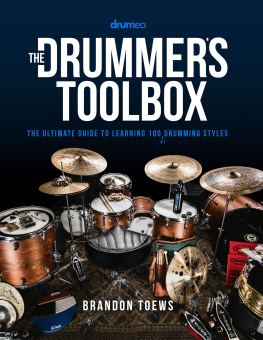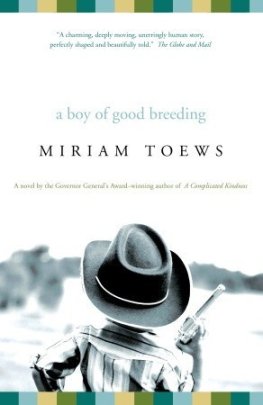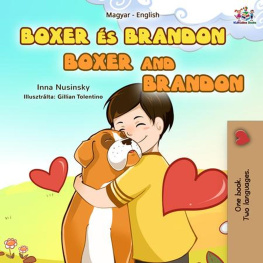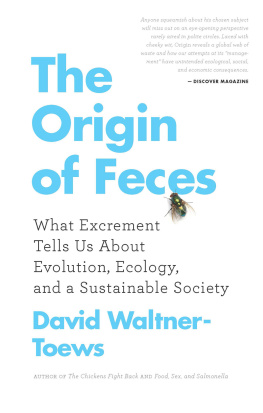Brandon Toews - The Drummers Toolbox
Here you can read online Brandon Toews - The Drummers Toolbox full text of the book (entire story) in english for free. Download pdf and epub, get meaning, cover and reviews about this ebook. genre: Children. Description of the work, (preface) as well as reviews are available. Best literature library LitArk.com created for fans of good reading and offers a wide selection of genres:
Romance novel
Science fiction
Adventure
Detective
Science
History
Home and family
Prose
Art
Politics
Computer
Non-fiction
Religion
Business
Children
Humor
Choose a favorite category and find really read worthwhile books. Enjoy immersion in the world of imagination, feel the emotions of the characters or learn something new for yourself, make an fascinating discovery.
- Book:The Drummers Toolbox
- Author:
- Genre:
- Rating:5 / 5
- Favourites:Add to favourites
- Your mark:
- 100
- 1
- 2
- 3
- 4
- 5
The Drummers Toolbox: summary, description and annotation
We offer to read an annotation, description, summary or preface (depends on what the author of the book "The Drummers Toolbox" wrote himself). If you haven't found the necessary information about the book — write in the comments, we will try to find it.
The Drummers Toolbox — read online for free the complete book (whole text) full work
Below is the text of the book, divided by pages. System saving the place of the last page read, allows you to conveniently read the book "The Drummers Toolbox" online for free, without having to search again every time where you left off. Put a bookmark, and you can go to the page where you finished reading at any time.
Font size:
Interval:
Bookmark:
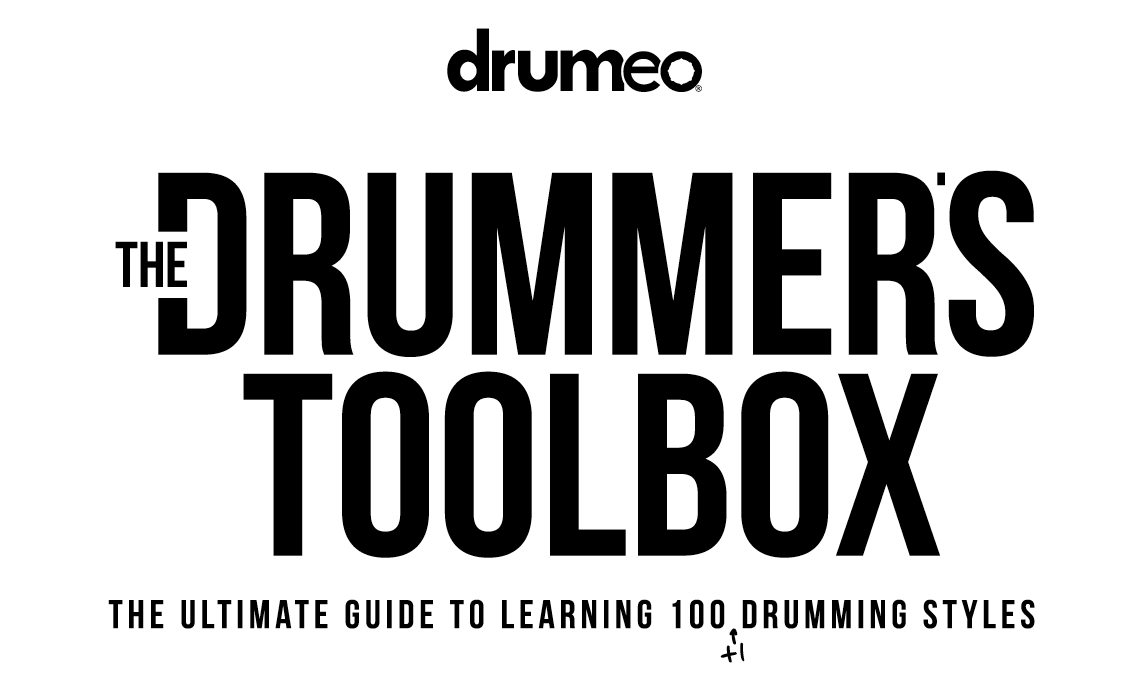
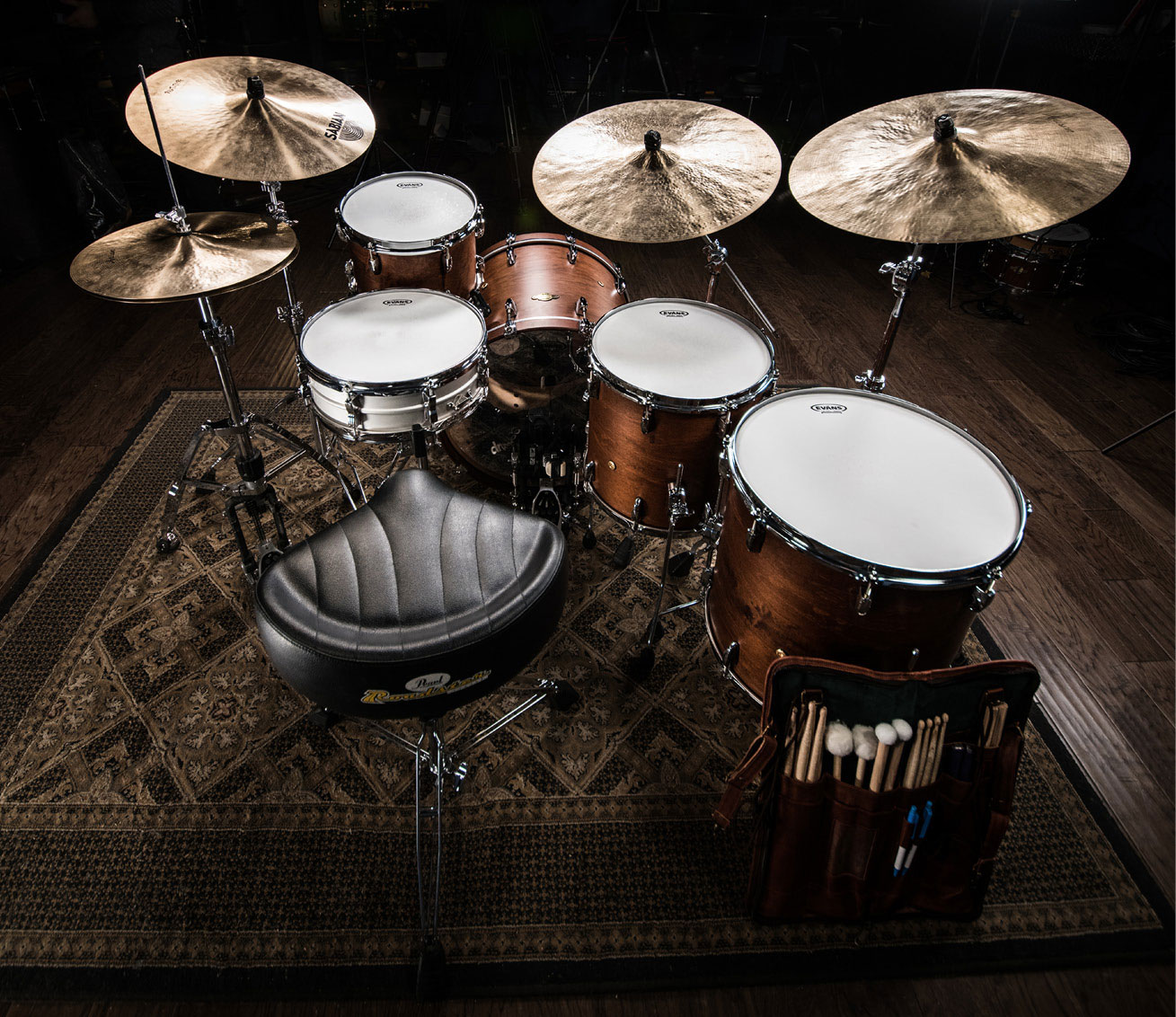
Throughout this book, youll find tons of photos that feature different drum-set configurations. The drum-set configuration you see me playing in each chapter is what I would personally use when playing that particular style of music. Every drummer should develop their own preferred setup for each style of music that they play. Youll notice that some configurations I use are identical (or very similar) to one another while others vary drastically.

For many, rock music brings back memories of drummers like Keith Moon destroying his drum-set on stage, bands like Rush protesting against record labels, and everyone turning their volume knobs up to eleven in the immortal words of Spi n al Tap. Thats right, rock music is rebellious, loud, and all about the attitude.
Ive loved playing rock music ever since I started on the drums at eight years old. In fact, its because of rock drummers like Tico Torres and Larry Mullen Jr. that I started playing drums in the first place. I love playing rock music because the drums take on such an important and dominant role in this style.
Rock music first developed in the late 1940s and early 1950s in the United States, primarily as a result of blues and country music. This genre typically features vocals, electric guitar, bass guitar, drums, and often a piano or keyboard. The music is amplified, it features repetitive song forms with verses, choruses, bridges, and solo sections (progressive rock is an exception that can feature many more sections), and youll almost always hear a catchy hook or riff that you cant get out of your head.
When it comes to rock drumming, the bass drum and snare drum are the most important components, because they emphasize the musics pulse. In most rock music, the snare drum is responsible for playing steady backbeats on beats two and four while the bass drum is responsible for following the rhythmic patterns played by the bass player. When you play rock music on the drums, youll apply these principles to quarter, eighth, and sixteenth note grooves. Youll also incorporate techniques like rim shots and cross-sticking into many rock grooves, depending on the specific style of rock drumming.
I think its super beneficial to develop your rock drumming skills before you dive into any other drumming styles. Thats because the skills youll learn from rock drumming will apply to all of the other drumming styles you learn. By learning how to play rock music first, youll develop a solid vocabulary of drum grooves that can be orchestrated around the drum-set in tons of different ways. These grooves will apply directly to other styles like jazz, blues, country, funk, soul, and metal.
In this chapter, Ill walk you through ten rock drumming styles in the order they emerged. Youll start by learning some styles from the 1950s and work your way through four decades of rock music up until the 1990s. This way, youll be able to see how rock drumming has evolved and diversified over the years.
One of the first styles of rock music to emerge in the 1950s was pop rock. This was, and still is today, one of the most commercially successful styles of rock music.
Pop rock places emphasis on lyrical content, song arrangements, and music production. This style of music features typical rock instrumentation without the volume and aggression associated with other rock styles like grunge, hard rock, and punk rock. In fact, pop rock was originally combating the aggressive attitude associated with rock and roll (which was another of the very first styles of rock music to emerge during the late 1940s). Thats why pop rock is so commercially successful: it appeals to a wider audience. Some of the most successful pop rock artists and bands in history include The Beatles, Michael Jackson, Oasis, Coldplay, and Fleetwood Mac.
Pop rock drumming is all about money beats. These are simple drum beats, with backbeats played on beats two and four, that result in a paycheck. If you want to be a professional drummer, these are the beats that you need to know. Take the time to master the grooves used in pop rock, and youll thank yourself later. While money beats are the most popular beats played in pop rock music, there are still exceptions where drummers will play more complex beats (youll learn some of these in this section as well). When playing the examples in this section, focus on achieving a consistent overall sound with your hi-hats, bass drum, and snare drum. Specifically, pay attention to your volume and intensity. Keep all of these things in mind when youre practicing these pop rock grooves: imagine youre in the studio recording the perfect drum track for the next big radio hit. This is the ideal mindset when playing pop rock music on the drums.
This is the most famous pop rock money beat around, appearing on countless recordings. You can listen to Steve Jordan perform this example in the song Heartbreak Warfare by John Mayer at 0:07.
_-_Score.png)
Start by playing steady eighth notes on your hi-hats.
_-_Score1.png)
Now, add in the bass drum pattern.
_-_Score2.png)
Lastly, add in the snare drum backbeats on beats two and four.
_-_Score3.png)
This money beat features a four on the floor bass drum pattern.
_-_Score4.png)
If I Never See Your Face Again by Maroon 5 features this drum beat played by Matt Flynn. You can hear him perform this beat in the verse at 0:18.
_-_Score5.png)
Heres an example of a money beat with a more syncopated bass drum pattern.
_-_Score6.png)
This example is played by Ringo Starr in the song Let It Be by The Beatles. It features a one-handed sixteenth note hi-hat pattern. You can also try playing this groove at faster tempos by using both hands on the hi-hats. Check it out in the recording at 2:02.
_-_Score7.png)
This last example is quite complex. When Jonathan Sugarfoot MoffettMichael Jacksons final touring drummercame to Drumeo, he performed this groove at the beginning of his live lesson in the song Wanna Be Startin Somethin by Michael Jackson. Comparing it with the programmed drum groove in the studio recording, youll hear that this variation features the addition of extra bass drum strokes and hi-hat openings. If youre anything like me, youll probably be obsessed with this groove for a few weeks.
Font size:
Interval:
Bookmark:
Similar books «The Drummers Toolbox»
Look at similar books to The Drummers Toolbox. We have selected literature similar in name and meaning in the hope of providing readers with more options to find new, interesting, not yet read works.
Discussion, reviews of the book The Drummers Toolbox and just readers' own opinions. Leave your comments, write what you think about the work, its meaning or the main characters. Specify what exactly you liked and what you didn't like, and why you think so.

